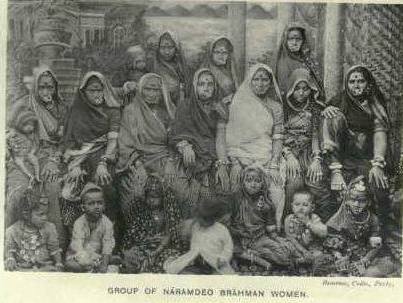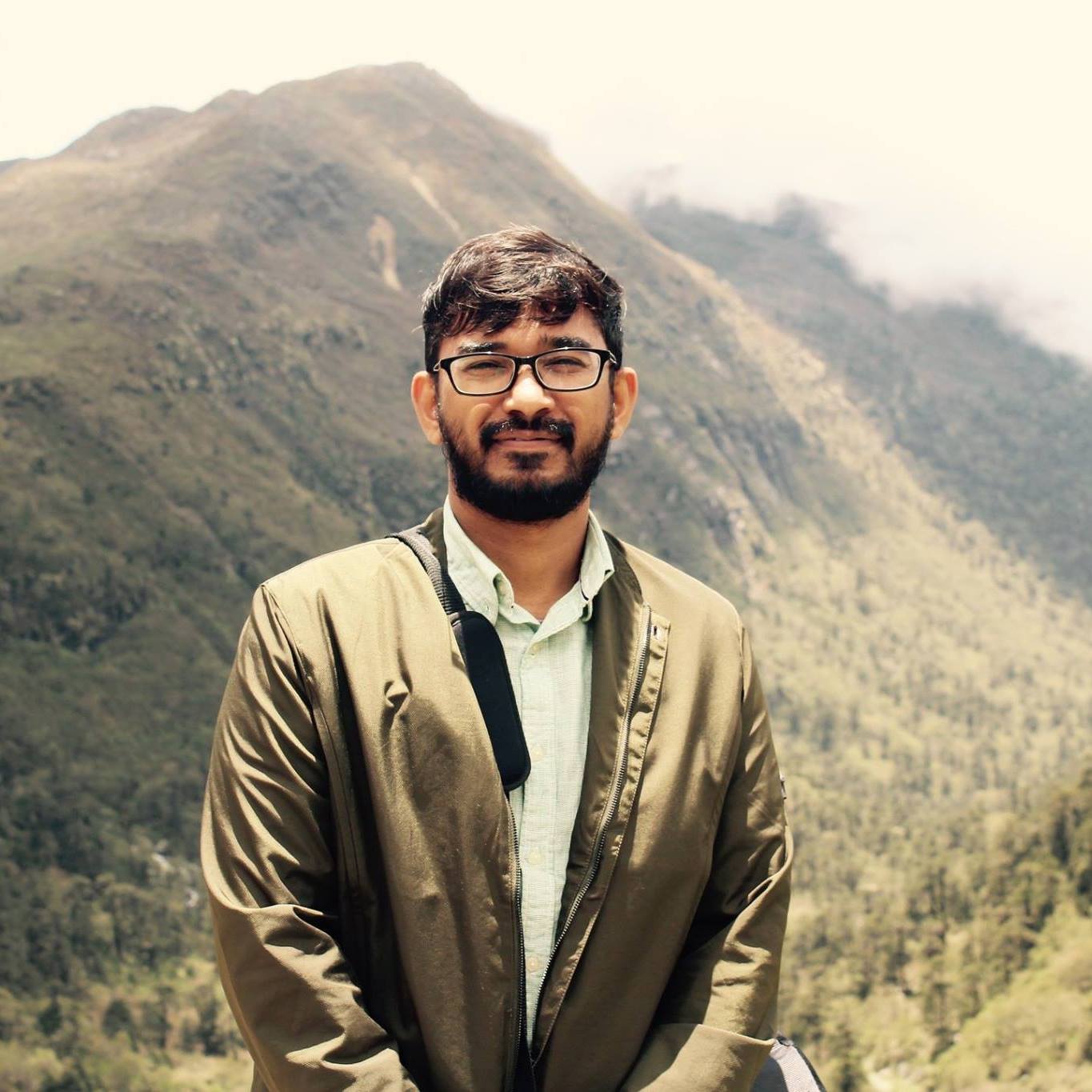Anu Ramdas
“That which is not destroyed when the upadhis of time, space, and causation are destroyed, is Brahman, the immortal Reality.*”
The foundational belief system of the Brahmins as per their own foundational texts is unapologetically supremacist. When confronted, one expects the present day brahmin with stakes in rational thought to readily agree to its invalidity. The buddhist discourse, anti-caste movements and literatures have all repeatedly explicated the hollowness of the Brahmanic claims of innate and never reducible superiority. Ambedkar had pointed out that this literature refuses to be accountable to historical verification and piously claims divine authorship and therefore, has to be relegated to the realm of myths. Yet, the supremacist belief system of the Brahmin receives continuous validation in the social discourse of the subcontinent.

Source: Library of Congress
Let us step back and familiarize ourselves with the term—supremacy. The most commonly discussed form is: white supremacy, which is a belief system of persons who believe that the white race is better than all other races and should have control over them. The less discussed one is: Brahmin supremacy, which is a belief system of persons who believe that the Brahmins are better than all other humans who have been divided into lesser castes, and should have control over them.
In human history, Brahmin supremacy is one of the oldest forms that has not waned. Instead, it thrives vigorously while other supremacist forms have disappeared, or are withering or have at least entered the stage of being shamed and critiqued at a common sense level.
How does Brahmin supremacy constitute itself into a legitimate belief system? This question can be approached by examining the usual three aspects of any social group which claims distinctness: self perception of the members; projection of the group’s identity to non-members and the perception of this group by non-members.
Now, let us frame a set a questions around these: how does the Brahmin perceive himself; how does he project his identity to non-brahmins and how do the non-brahmins perceive the brahmin (both as an individual and as a community)?
Self-perception of Brahmins is inseparable from their belongingness to a group of humans wherein every single member believes he is born superior and is always superior in all situations and across generations. Evidence for this is not limited to archaic texts, but is a continuous core theme in the indological archives, in contemporary knowledge production as well as in everyday conversations and actions. A recent highly visible example is the celebration of Gaud Saraswat Brahmin (GSB) pride and its defense by a Brahmin, who is also a high profile member of the fourth pillar of Indian democracy. Exposure to western liberal education and values does not act as a deterrent to the Brahmin’s constant assertion of being born superior.
All channels of communications are routinely used to further the supremacist legacy: be it academics, entertainment or business. Evidence for this is more categorical in the complete absence of debunking of this belief system in the mainstream at any level – intellectual, literary, artistic or spiritual. Ashis Nandy’s candid display of the Brahmin supremacist belief system enabled power to racialize whole communities – dalits, adivasi and bahujan – as being corrupt did not bring forth societal condemnation as would be expected of any society that values equality, reason and morality. Instead, it produced a round of academic and mainstream literature upholding his right to do so. Brahmin supremacy as the very essence of social thought in the subcontinent is maintained by a complex process of controlling the social discourses including ones aimed at dismantling Brahmin supremacy. The Roy-Navayana project of appropriating Babasaheb’s Annihilation of Caste is a case in point.
How does the Brahmin project his supremacy to the rest of the world? Imagine we want to put this belief system across as a simple pedagogic exercise. Let’s say, we are teaching a 8th grade multicultural classroom in some country where the brahmin belief system is not all pervasive. We want to generate a set of verifiable facts about Brahmin supremacy in simple English.
There are a few ways we can we go about this lesson preparation. One way is to ask a series of questions about Brahmin supremacy as a social reality and direct the students to find answers with verifiable evidence, such as:
1. What could have led to the formation of a group of humans wherein every single member believes he is superior than all other non-Brahmins and lives accordingly? Keep in mind the Brahmin as a sociological group is as diverse as the next community in the sub-continent, speaking as many languages; yet, they all have the same experience, history and vision of being and procreating supremacists.
2. Does the Brahmin personhood never face situations of being traumatized, bullied, excluded or marginalized that makes him question his worth, his beliefs about himself, question the narratives of the Brahmins’ collective and individual superiority?
3. What is the function of the Brahmin supremacist belief system and what are its main components?
4. How does this Brahmin supremacist belief system become a shared value for all Brahmins in an uninterrupted manner through history?
5. Do they ask–who they really are? Do they ponder if they are really better than the next human? Do they have moments or periods of self-doubt that they might be just ordinary humans with average capacities?
As one can quickly gather there is very little documentation to answer these basic questions. The Brahmin extensively uses the colonizers’ gaze and methods to specimen-ize communities lying outside the perimeter of the caste system—the Dalits and Adivasis. But very curiously, the Brahmin seems to have completely evaded the anthropological gaze, despite having full charge of massive institutional resources to scrutinize himself as an anthropological specimen. Why is this so?
To begin seriously engaging with the above questions it would need major and several academic projects to be initiated. The points and concepts that I want to flag for the series on The Brahmin Problem are along the lines of examining them as a specific social group.
Are Brahmins an ethnic group, a race, a caste or a class?
A supremacist doesn’t exist in a vacuum, he subscribes to an existing belief system of superiority shared by a larger group of humans. The supremacist belief system needs to differentiate its members from the others in very specific ways. Therefore, this question: what are the markers that the brahmin values as only available to fellow brahmins and none others? Are they racial markers, or are they cultural, or territorial or a combination of these elements?
The Brahmins do not have any racial distinctness to be classified as a racial group separate from the rest of Indians, nor are they an ethnic group emerging out of common ancestry, or territory or culture. They, like the rest of the castes belong to many subcastes, speak many languages and hail from many regions and are strictly endogamic. In other words, there is no kinship relations holding all the Brahmins together.
Are the Brahmins a class, then? Easily verifiable empirical evidence is available showing that the Brahmins as a group happen to be the Ruling Social Class. They occupy the most powerful positions in all fields within the subcontinent. They are completely in control of the dominant social discourse.
Brahmin supremacy is constrained by territory
“In the beginning Brahman was all this. He was one, and infinite; infinite in the East, infinite in the South, infinite in the West, infinite in the North, above and below and everywhere infinite.*”
The supremacist can exist only in the context where the belief system is operational, that is, other castes have to exist as lower social groups indefinitely for the Brahmin supremacy to remain unchallenged and undisturbed. In other words, there is no Brahmin supremacy in societies that do not have a fully functional caste society. The Brahmin supremacy has territorial limits within the subcontinent. Outside of it, the Brahmin is simply another Brown person. To reclaim his superior status in the diaspora he has to be within South Asian groups at all times. He loses it the moment he is outside such Indian/SAsian groups or the occasional whites fascinated with the Browns. Reconciling the supremacist self with the global disinterest in his supremacy or even his imprint as a person in the eyes of the white supremacist system must cause him major cognitive dissonance. He is faced with the improbable task of institutionalizing caste as a global order for Brahmin supremacy to be given a chance outside of India’s borders.
To conclude, how do the Brahmins constitute themselves into the ruling social class in the absence of kinship relations, common language, territory, culture and other legacies? What is the role of the Brahmin supremacist thought in enabling the Brahmin to become the ruling class?
~
Notes
1. Babasaheb Ambedkar in AoC: To hold that distinctions of castes are really distinctions of race, and to treat different castes as though they were so many different races, is a gross perversion of facts. What racial affinity is there between the Brahmin of the Punjab and the Brahmin of Madras? What racial affinity is there between the untouchable of Bengal and the untouchable of Madras? What racial difference is there between the Brahmin of the Punjab and the Chamar of the Punjab? What racial difference is there between the Brahmin of Madras and the Pariah of Madras? The Brahmin of the Punjab is racially of the same stock as the Chamar of the Punjab, and the Brahmin of Madras is of the same race as the Punjab is racially of the same stock as the Chamar of the Punjab, and the Brahmin of Madras is of the same race as the Pariah of Madras.
2. Babasaheb Ambedkar in AoC: In my province the Golak Brahmins, Deorukha Brahmins, Karada Brahmins, Palshe Brahmins, and Chitpavan Brahmins all claim to be sub-divisions of the Brahmin caste. But the anti-social spirit that prevails between them is quite as marked and quite as virulent as the anti-social spirit that prevails between them and other non-Brahmin castes. There is nothing strange in this. An anti-social spirit is found wherever one group has “interests of its own” which shut it out from full interaction with other groups, so that its prevailing purpose is protection of what it has got.
3. Babasaheb Ambedkar in AoC: You may think it a pity that the intellectual class in India is simply another name for the Brahmin caste. You may regret that the two are one; that the existence of the intellectual class should be bound up with one single caste; that this intellectual class should share the interest and the aspirations of that Brahmin caste, and should be a class which has regarded itself as the custodian of the interest of that caste, rather than of the interests of the country. All this may be very regrettable. But the fact remains that the Brahmins form the intellectual class of the Hindus. It is not only an intellectual class, but it is a class which is held in great reverence by the rest of the Hindus.
4. * quotes from the Upanishads.
My inspiration as always are the intellectual traditions of the anti-caste movements. I am grateful to my contemporary anti-caste friends and writers, especially Kuffir, for the extensive discussions on caste.
~~~









